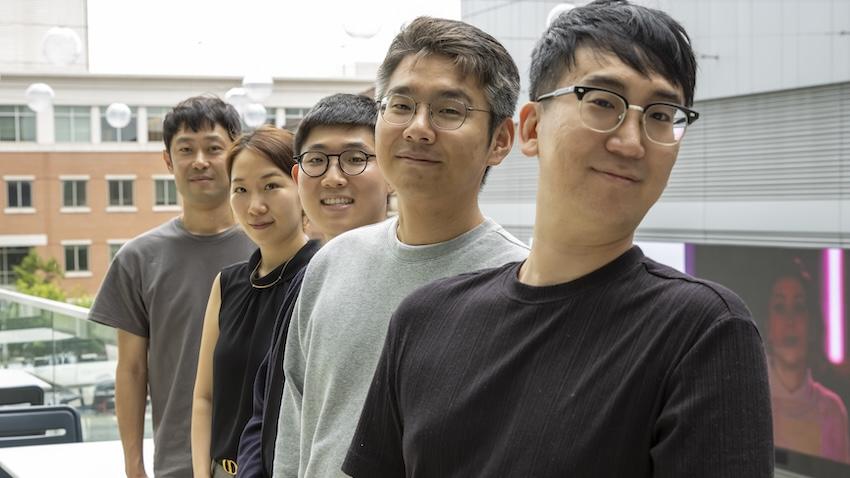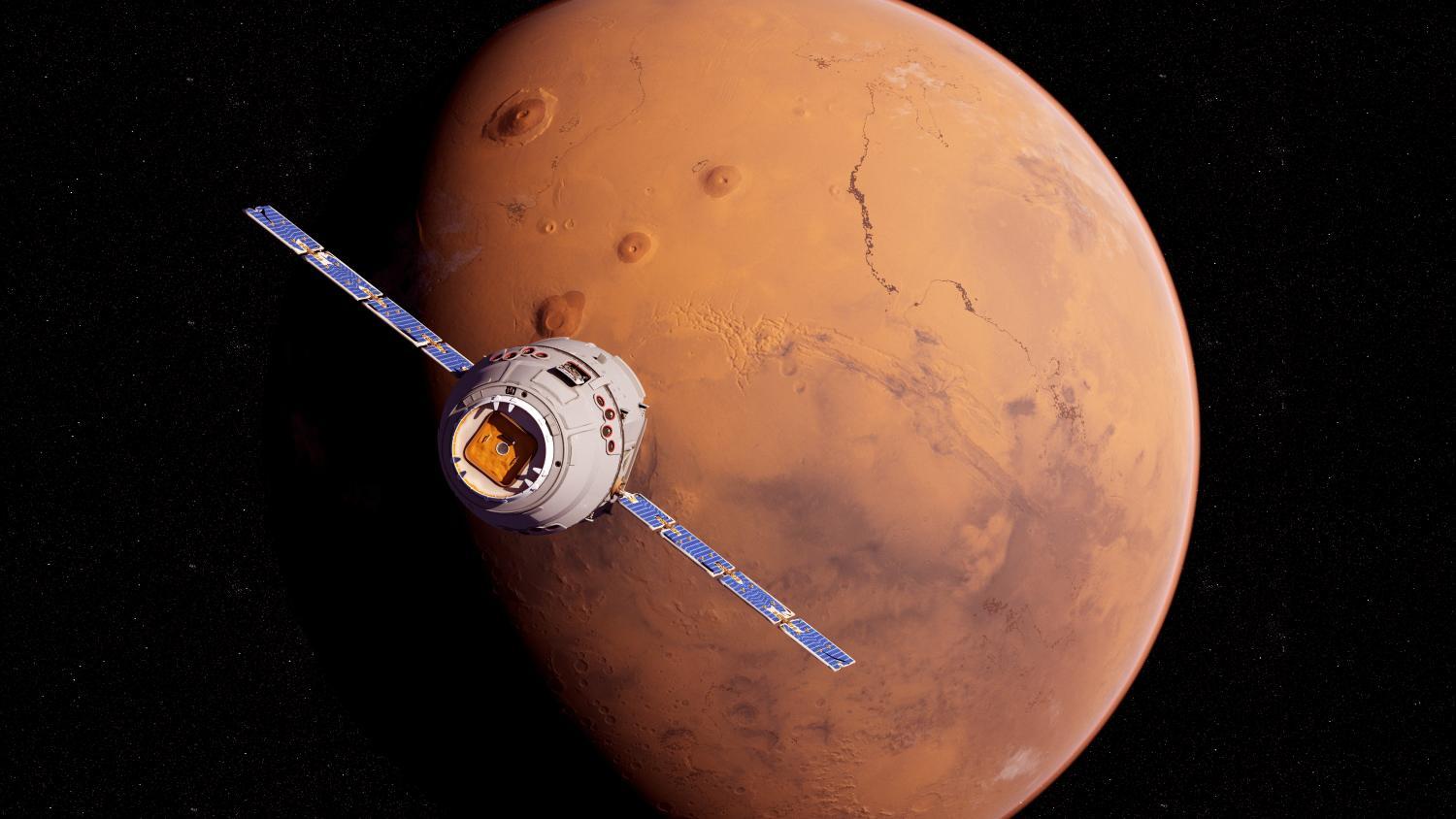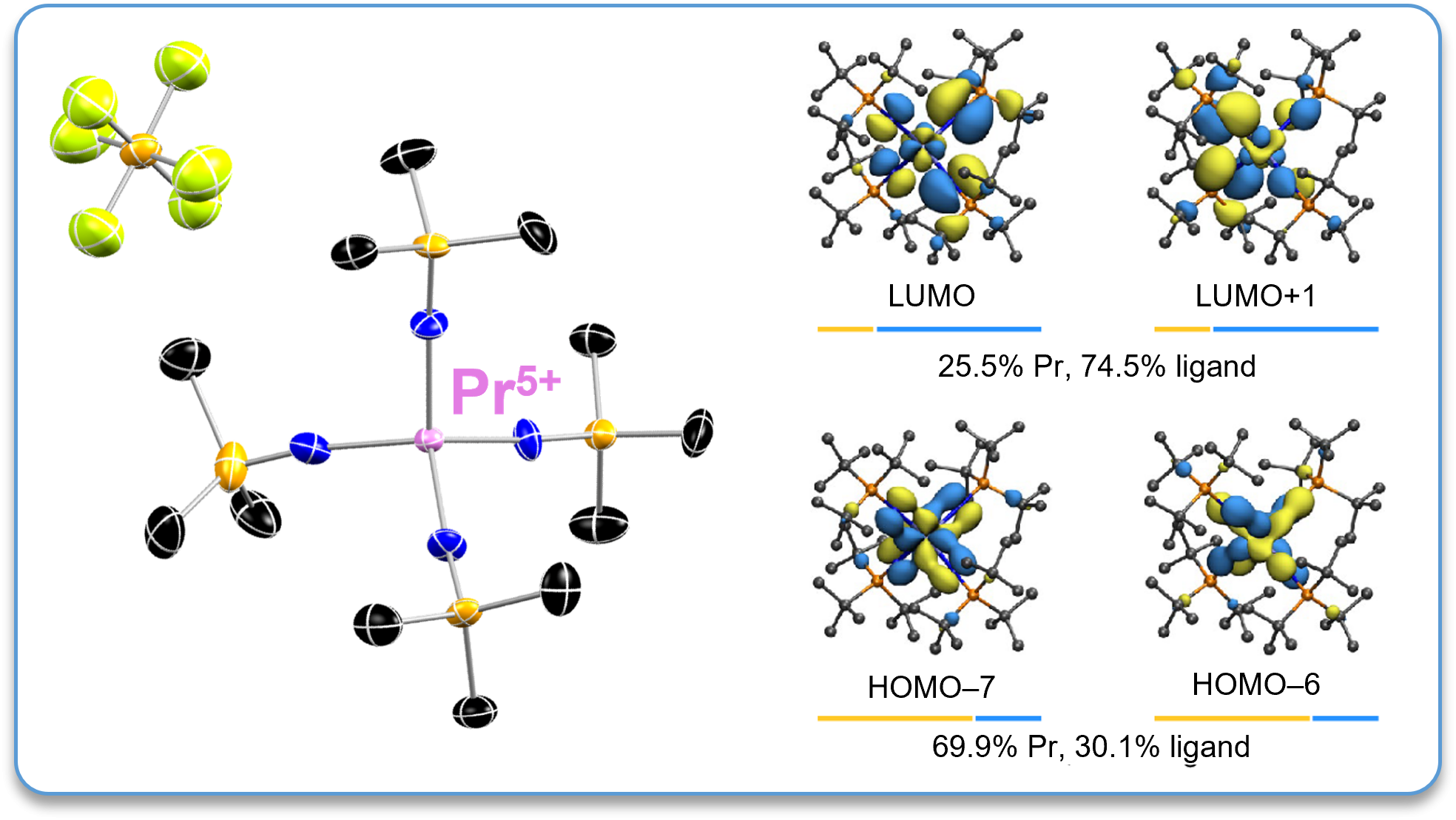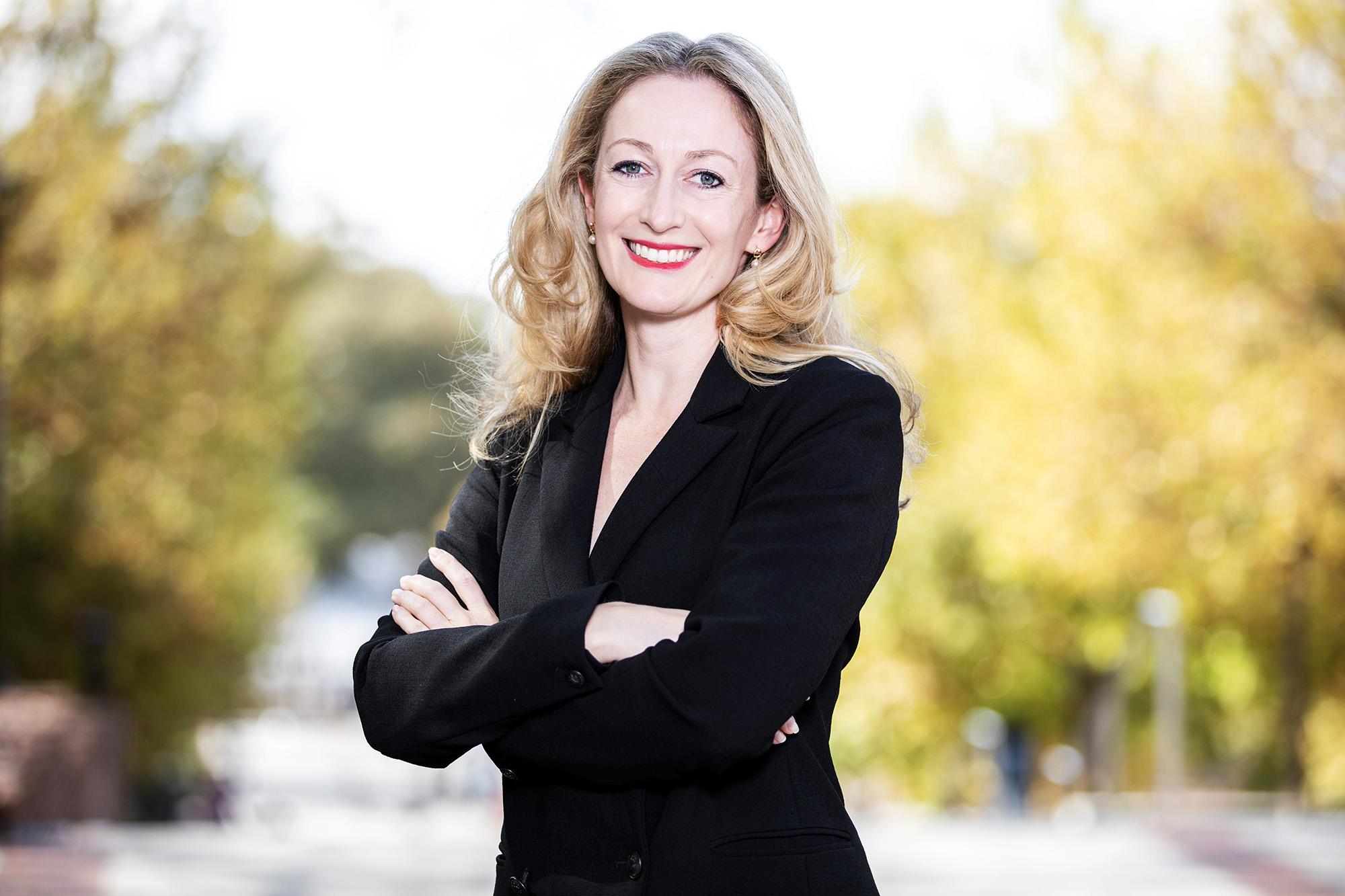Space Station Testing Will Evaluate Photovoltaic Materials
Jun 24, 2025 —

Solar cells account for approximately six percent of the electricity used on Earth; however, in space, they play a significantly larger role, with nearly all satellites relying on advanced solar cells for their power. That’s why Georgia Tech researchers will soon send 18 photovoltaic cells to the International Space Station for a study of how space conditions affect the devices’ operation over time.
“The main goal here is to improve power generation in space,” said Jud Ready, principal research engineer at the Georgia Tech Research Institute (GTRI) and Associate Director of External Engagement with Georgia Tech’s Institute for Matter and Systems. “The limiting factor on the performance of a spacecraft is usually how much power you can produce. Power, size, weight, complexity, cost – all of these are tied closely to the electrical generation of the solar panels.”
Media Inquiries: gtri.media@gtri.gatech.edu
Writer: John Toon (john.toon@gtri.gatech.edu)
GTRI Communications
Georgia Tech Research Institute
Atlanta, Georgia USA
Tech Researchers Tapped to Build AI Systems for Medical Robots in South Korea
Jun 25, 2025 —

School of Interactive Computing Assistant Professor Sehoon Ha, Neuromeka researchers Joonho Lee and Yunho Kim, School of IC Assistant Professor Jennifer Kim, and Electronics and Telecommunications Research Institute researcher Dongyeop Kang, are collaborating to develop a medical assistant robot to support doctors and nurses in Korea. Photo by Nathan Deen/College of Computing.
Overwhelmed doctors and nurses struggling to provide adequate patient care in South Korea are getting support from Georgia Tech and Korean-based researchers through an AI-powered robotic medical assistant.
Top South Korean research institutes have enlisted Georgia Tech researchers Sehoon Ha and Jennifer G. Kim to develop artificial intelligence (AI) to help the humanoid assistant navigate hospitals and interact with doctors, nurses, and patients.
Ha and Kim will partner with Neuromeka, a South Korean robotics company, on a five-year, 10 billion won (about $7.2 million US) grant from the South Korean government. Georgia Tech will receive about $1.8 million of the grant.
Ha and Kim, assistant professors in the School of Interactive Computing, will lead Tech’s efforts and also work with researchers from the Korea Advanced Institute of Science and Technology and the Electronics and Telecommunications Research Institute.
Neuromeka has built industrial robots since its founding in 2013 and recently decided to expand into humanoid service robots.
Lee, the group leader of the humanoid medical assistant project, said he fielded partnership requests from many academic researchers. Ha and Kim stood out as an ideal match because of their robotics, AI, and human-computer interaction expertise.
For Ha, the project is an opportunity to test navigation and control algorithms he’s developed through research that earned him the National Science Foundation CAREER Award. Ha combines computer simulation and real-world training data to make robots more deployable in high-stress, chaotic environments.
“Dr. Ha has everything we want to put into our system, including his navigation policies,” Lee said. “He works with robots and AI, and there weren’t many candidates in that space. We needed a collaborator who can create the software and has experience running it on robots.”
Ha said he is already considering how his algorithms could scale beyond hospitals and become a universal means of robot navigation in unstructured real-world environments.
“For now, we’re focusing on a customized navigation model for Korean environments, but there are ways to transfer the data set to different environments, such as the U.S. or European healthcare systems,” Ha said.
“The final product can be deployed to other systems and industries. It can help industrial workers at factories, retail stores, any place where workers can get overwhelmed by a high volume of tasks.”
Kim will focus on making the robot’s design and interaction features more human. She’ll develop a large-language model (LLM) AI system to communicate with patients, nurses, and doctors. She’ll also develop an app that will allow users to input their commands and queries.
“This project is not just about controlling robots, which is why Dr. Kim’s expertise in human-computer interaction design through natural language was essential.,” Lee said.
Kim is interviewing stakeholders from three South Korean hospitals to identify service and care pain points. The issues she’s identified so far relate to doctor-patient communication, a lack of emotional support for patients, and an excessive number of small tasks that consume nurses’ time.
“Our goal is to develop this robot in a very human-centered way,” she said. “One way is to give patients a way to communicate about the quality of their care and how the robot can support their emotional well-being.
“We found that patients often hesitate to ask busy nurses for small things like getting a cup of water. We believe this is an area a robot can support.”
The robot’s hardware will be built in Korea, while Ha and Kim will develop the software in the U.S.
Jong-hoon Park, CEO of Neuromeka, said in a press release the goal is to have a commercialized product as soon as possible.
“Through this project, we will solve problems that existing collaborative robots could not,” Park said. “We expect the medical AI humanoid robot technology being developed will contribute to reducing the daily work burden of medical and healthcare workers in the field.”
Mars Rising as the New Frontier of Science and Strategy
Jun 25, 2025 —

More than half a century after the United States won the race to the moon, the White House is setting its sights on a new frontier: Mars. In a move reminiscent of the Apollo era, the administration has proposed landing Americans on the red planet by the end of 2026 — a bold initiative that has reignited national ambition and drawn comparisons to the space race of the 20th century.
At Georgia Tech, researchers are already considering the mission’s implications, from engineering challenges to international diplomacy. While the White House has framed the mission as a demonstration of American leadership, experts say its success will depend on collaboration — across disciplines, sectors, and borders.
“This is more than a space race,” said Christos Athanasiou, an assistant professor in the Daniel Guggenheim School of Aerospace Engineering. “Mars isn’t just the next step for space exploration — it’s a stress test for everything we’ve learned about sustainability, resilience, and engineering under uncertainty.”
Engineering for the Red Planet
For Athanasiou, the Mars mission is a test of human ingenuity, creativity, and endurance. Unlike the moon, Mars is months away by spacecraft, with no quick return option. That distance introduces a host of engineering challenges that must be solved before a single boot touches Martian soil.
“Ensuring astronaut safety on such a long-duration mission requires us to understand how the Earth materials we will be using in our mission behave in extraterrestrial conditions,” he said.
In his recent TEDx talk, Athanasiou emphasized that the mission must also consider its environmental impact. Mars may be barren, but it is not immune to contamination. Athanasiou believes that strategies used for environmental remediation on Earth — such as waste recycling, habitat sustainability, and pollution control — can be adapted to protect the Martian environment.
“If we can build structures that survive Mars using recycled materials, AI, and Earth-born ingenuity, we’ll unlock entirely new ways to live — both out there and back here,” he said.
Reading the Martian Landscape
James Wray, a professor in the School of Earth and Atmospheric Sciences, has spent years analyzing Mars’ surface using data from orbiters and rovers. He sees the planet as both a scientific treasure trove and a logistical puzzle.
“Mars has vast lava plains, dust storms, and steep canyons that pose real risks to human settlement,” Wray said.
But beneath the challenges lies opportunity. Mars is home to significant deposits of water ice, especially near the poles and just below the surface in some mid-latitude regions. That water could be used not only for drinking but also for producing oxygen and rocket fuel — critical resources for long-term habitation and return missions.
“The presence of water ice near the surface is a game changer. It could support life, and more importantly, it could support us,” Wray said.
He also noted that Mars’ thin atmosphere — just 1% the density of Earth’s — complicates everything from landing spacecraft to shielding astronauts from cosmic radiation. “We’ve learned a lot from robotic missions. Now it’s time to apply that knowledge to human exploration.”
Diplomacy Beyond Earth
Lincoln Hines, an assistant professor in the Sam Nunn School of International Affairs, says that the Mars mission could have significant diplomatic implications. “The Mars mission has little to no bearing on space security; it has no military value,” he said. However, he noted that international cooperation could still play a valuable role in reducing the financial burden of such a costly endeavor.
Hines warned that shifting U.S. priorities from the moon to Mars could strain the international partnerships built through the Artemis program. He explained that some countries may view the Mars initiative as a distraction from the more immediate and economically promising lunar goals. Political instability in the U.S., he added, could further erode trust in its long-term commitments. “Countries may lose faith that the United States is a reliable partner to cooperate with for its lunar program if Mars seems to be the new priority,” he said.
He also pointed to existing legal frameworks like the Outer Space Treaty, which prohibits sovereign claims on celestial bodies, and the Rescue Agreement, which obliges nations to assist astronauts in distress. While these agreements provide a foundation, Hines emphasized that they don’t fully address the complexities of future Mars missions.
Establishing international norms for Mars exploration, he said, will be challenging. “Norms are really hard to develop,” Hines explained, noting that countries often hesitate to commit to rules without assurance that others will do the same. Still, he suggested that Mars — with its limited material value — might offer a rare opportunity for cooperation, if nations are willing to engage in good faith.
Siobhan Rodriguez
Senior Media Relations Representative
Institute Communications
How New Information Triggers the Brain to Navigate Changing Environments
Jun 24, 2025 —

Stephanie Prince explains her research with a scenario many Atlantans can relate to.
Imagine you’re driving to the Atlanta airport to pick up a friend. They call to say they’re in the terminal — but they’re not sure which one. North, maybe? You head that direction through the maze of roads around the airport.
Then they call back. They’re actually in the South Terminal. So you make a quick mental adjustment and switch your route to arrive at the correct side of the airport.
You had a plan. You received new information. You quickly changed your destination.
The question Prince has studied is this: How does that process happen in the brain?
A new research paper in Nature Communications is offering insights into that decision-making. And it could help scientists as they work to better understand when brain disorders such as Parkinson’s and Alzheimer’s impair those processes.
Joshua Stewart
College of Engineering
Georgia Tech Researchers Make an Elemental Discovery
Jun 24, 2025 —

A longstanding mystery of the periodic table involves a group of unique elements called lanthanides. Also known as rare earth elements, or REEs, these silvery-white metals are challenging to isolate, given their very similar chemical and physical properties. This similarity makes it difficult to distinguish REEs from one other during extraction and purification processes.
The world has come to depend on lanthanides’ magnetic and optical properties to drive much of modern technology — from medical imaging to missiles to smart phones. These metals also are in short supply, and because they’re found in minerals, lanthanides are difficult to mine and separate. But that may change — thanks to a Georgia Tech-led discovery of a new oxidation state for a lanthanide element known as praseodymium.
For the first time ever, praseodymium achieved a 5+ oxidation state. Oxidation occurs when a substance meets oxygen or another oxidizing substance. (The browning on the flesh of a cut apple, as well as rust on metal, are examples of oxidation.)
As far back as the 1890s, scientists suspected lanthanides might have a 5+ oxidation state, but lanthanides in that state were too unstable to see, said Henry ”Pete“ La Pierre, an associate professor in Georgia Tech’s School of Chemistry and Biochemistry. Discovering an element’s new oxidation state is like discovering a new element. As an example, La Pierre noted how plutonium’s discovery opened up a whole new area of the periodic table.
“A new oxidation state tells us what we don’t know and gives us ideas for where to go,” he explained. “Each oxidation state of an element has distinct chemical and physical properties — so the first glimpse of a novel oxidation presents a roadmap for new possibilities.”
La Pierre and colleagues at University of Iowa and Washington State University recently discovered the 5+ oxidation state for lanthanides.
“It was predicted but never seen until we found it,” said La Pierre, corresponding author of the study, “Praseodymium in the Formal +5 Oxidation State,” which was recently published in Nature Chemistry. “Lanthanides’ properties are really fantastic. We only use them commercially in one oxidation state — the 3+ oxidation state — which defines a set of magnetic and optical properties. If you can stabilize a higher oxidation state, it could lead to entirely new magnetic and optical properties.”
The researchers’ breakthrough will broaden the lanthanides’ technical applications in fields such as rare-earth mining and quantum technology and could lead to new electronic device architectures and applications.
“Research in lanthanides has already yielded significant dividends for society in terms of technological development,” La Pierre added.
The researchers hope to discover new tools for mining critical REEs, including improving lanthanide separation and recycling processes. When mining these elements, lanthanide elements are frequently mixed together. The separation process is painstaking and inefficient, generating a significant amount of waste. But with increasing global demand for REEs, the U.S. faces a supply issue. Figuring out how to improve lanthanides separation, potentially through oxidation chemistry, will ultimately enhance the supply of these critical elements.
— Anne Wainscott-Sargent
Funding: This research was supported by grants from the National Science Foundation and the U.S. Department of Energy.
Shelley Wunder-Smith
Director of Research Communications
Students at the Intersection of Law, AI, and Justice Tackle Medical Debt Through Data
Jun 23, 2025 —

Eight students. Four Georgia Tech colleges. One semester-long project with an uncertain outcome. Led by Scheller College of Business Law and Ethics Professor Charlotte Alexander students from across the Institute came together in the Law, Data, and Design Lab to complete a Vertically Integrated Project during the 2025 Spring semester. One team project addressed a growing crisis affecting some of the nation’s most vulnerable: medical debt litigation.
Armed with a desire to do good in the world, and growing expertise in their current studies at the colleges of Business, Computing, Engineering, and Industrial and Systems Engineering, the students discovered how powerful interdisciplinary collaboration and cutting-edge technology can be in creating social change.
The Law, Data, and Design Lab is the brainchild of Alexander, who from a young age felt a call to serve her community. “I went to law school because I saw law as a tool to look beyond myself and contribute to the greater good,” said Alexander. “I see this as part of my purpose. Being at a public university, I take seriously the responsibility to ensure my research is outward facing, that it reaches beyond academia and helps make the world a better place.”
A New Vision for Science Diplomacy: Q&A With Cassidy Sugimoto
Jun 23, 2025 —

Cassidy Sugimoto, School chair, Tom and Marie Patton Chair, and professor in the Jimmy and Rosalynn Carter School of Public Policy at Georgia Tech
Cassidy R. Sugimoto describes herself as a “metascientist.” She analyzes how the scientific ecosystem operates, and how its parts — the people, patents, publications, policies, funding, data, and more — comprise and influence the whole.
For her latest project, Sugimoto is going global. A grant from the Trans-Atlantic Platform for Social Sciences and Humanities is taking her across national borders and into science diplomacy. Here, we talk to her about her work and how a more open and equitable scientific ecosystem can change the world for the better.
Sugimoto is the School chair, Tom and Marie Patton Chair, and professor in the Jimmy and Rosalynn Carter School of Public Policy at Georgia Tech.
Please tell us a bit about your work and research.
In my research, I use a variety of tools — big data, surveys, interviews, and social science research methods — to understand how the system of science is operating. I want to know if it’s functioning efficiently, responsibly, and equitably. I look at how we make science, how it is funded and rewarded, and the policies supporting science. I also look at inequalities within the scientific system, such as the intersection of race and gender, and how that plays out in scientific production.
I’m also an administrator, which I love. I get to take all my research and put it into practice by considering how we support science and mentor scientists, and how we build organizations that are more equitable, sustainable, and innovative.
You have a new research project that’s taking you into science diplomacy. What is science diplomacy?
At its core, science diplomacy is about the interaction of science and nations. We split it into categories of science for diplomacy, diplomacy for science, science in diplomacy, and diplomacy in science. For example, we might use science to achieve a diplomatic objective, like fostering exchanges of scientists between countries to build goodwill. We might use science to inform diplomacy — for example, to understand which countries are competitive in certain emerging technologies and where we should focus our attention. We might also need diplomacy to achieve scientific goals, such as gaining access to a critical observatory or resource. Science diplomacy is all these things. For our project, we focus on creating an evidence base that is most useful for diplomatic purposes, with a particular emphasis on metascience observatories.
What is a metascience observatory?
In an astronomical observatory, you observe the cosmos. You’re observing and counting stars and planetary bodies and analyzing how the system works. But imagine that instead of looking at the sky, you're looking at the system of science.
Metascience observatories study scientific data and the scientific ecosystem. This includes the actors of science — scientists and administrators. It also includes institutions that support science, like funding agencies and academic universities. Finally, there’s the output of science. This includes scientific publications, scientific patents, and anything produced by scientists. So those are all the objects of the scientific system: people, institutions, and products.
We then take those people, institutions, and products and aggregate and analyze them, and — this is the “observatory” part — observe trends over time.
By observing all the parts and data that make up the scientific ecosystem, what questions are metascience observatories trying to answer?
The metascience observatory is about providing real-time data on the state of the scientific system to inform policy.
It could be anything related to the working of science. For example, are we producing more scientists or fewer? Is the system functioning openly and equitably? Are we studying certain topics more than others? Are we becoming more productive or less productive? Are we meeting society's needs? Are we addressing disease burdens that affect our countries?
These analytical questions inform policymakers, who can then make informed recommendations about how science can perform more optimally to address a nation’s needs.
Are there any current examples of metascience observatories? What do they do?
Our work has identified about 40 metascience observatories around the world. These meet our strict definition of being formal organizations dedicated to the study of science and technology that collect, analyze, and maintain data about the science and technology ecosystem, and that share their work openly with the public.
In the United States, the most prominent observatory is the National Center for Science and Engineering Statistics, which operates out of the National Science Foundation. This is a critical organization that provides data to the government on the status of science and engineering. It also publishes data and reports to inform researchers and policymakers on the state of science in the U.S.
What are you trying to achieve with this project? How will you know if you’ve accomplished your goal?
We began our grant with the job of defining and identifying scientific observatories. We are now conducting surveys and interviews to gain more information on how these organizations function, particularly in relation to diplomacy. In parallel, we are conducting several case studies — such as artificial intelligence and nuclear power — to examine how diplomats use science in these domains. Bringing these together, we will examine how evidence-based science diplomacy can be used to improve democracy, governance, and trust both within and across nations. We will also look at how we can build a more open, inclusive infrastructure for doing this type of work.
You mentioned “openness” of science. What does that mean, and why is it important?
Part of this story is about open science communication. When we don’t share scientific information quickly and accurately, it hinders the goals of science. The pandemic was an excellent example of science diplomacy’s importance.
During the pandemic, researchers were trying to publish Covid-related findings in some of the most elite journals, which caused delays in sharing critical information about Covid-19. Scientific publishers saw this concern and responded by making data and publications on Covid-19 freely available.
However, post-pandemic, they reverted to their closed approach. A recent study showed that publications associated with the United Nations’ Sustainable Development Goals are even less available than the average paper. This hinders science and, by extension, science diplomacy. To be able to provide evidence, that evidence should be open and robust.
How do you hope the global scientific ecosystem will evolve over the next decade or so?
Our scientific system is plagued with inequalities. On the individual level, scholars face barriers based on their gender, race, nationality, and language. Resources are concentrated within institutions, restricting the diversity of ideas. Nations have vastly unequal access to resources, which has adverse effects on meeting global needs. Even our data is skewed toward certain disciplines, languages, and countries, making our knowledge of the ecosystem incomplete and highly flawed. The most robust scientific ecosystem, and the data that supports it, requires an inclusive, open global infrastructure.
Funding: Trans-Atlantic Platform for Social Sciences and Humanities
Catherine Barzler, Senior Research Writer/Editor
Ocean ‘Greening’ at Poles Could Spell Changes for Fisheries
Jun 19, 2025 —

A satellite image of blooming phytoplankton, visible as green-tinted swirls, in the South Atlantic. Credit: NASA (OCI sensor aboard PACE on January 5, 2025)
Ocean waters are getting greener at the poles and bluer toward the equator, according to an analysis of satellite data published in Science on June 19. The change reflects shifting concentrations of a green pigment called chlorophyll made by phytoplankton, photosynthetic marine organisms at the base of the ocean food chain. If the trend continues, marine food webs could be affected, with potential repercussions for global fisheries.
“In the ocean, what we see based on satellite measurements is that the tropics and the subtropics are generally losing chlorophyll, whereas the polar regions — the high-latitude regions — are greening,” says first author Haipeng Zhao, a postdoctoral researcher at Georgia Tech working with Susan Lozier, dean of the College of Sciences and Betsy Middleton and John Sutherland Chair at Georgia Tech and Nicolas Cassar, the Lee Hill Snowdon Bass Chair at Duke University’s Nicholas School of the Environment.
Since the 1990s, many studies have documented enhanced greening on land, where global average leaf cover is increasing due to rising temperatures and other factors. But documenting photosynthesis across the ocean has been more difficult, according to the team. Although satellite images can provide data on chlorophyll production at the ocean’s surface, the picture is incomplete.
The study analyzed satellite data collected from 2003 to 2022 by a NASA instrument that combs the entire Earth every two days, measuring light wavelength. The researchers were looking for changes in chlorophyll concentration, a proxy for phytoplankton biomass. For consistency, they focused on the open ocean and excluded data from coastal waters.
“There are more suspended sediments in coastal waters, so optical properties are different than in the open ocean,” Zhao explains.
The satellite data revealed broad trends in color, indicating that chlorophyll is decreasing in subtropical and tropical regions and increasing toward the poles. Building on that finding, the team examined how chlorophyll concentration is changing at specific latitudes. To work around background noise and gaps in data, they had to get creative.
“We borrowed concepts from economics called the Lorenz curve and the Gini index, which together show how wealth is distributed in a society. So, we thought, let’s apply these to see whether the proportion of the ocean that holds the most chlorophyll has changed over time,” Cassar says.
They found similar but opposing trends in chlorophyll concentration over the two-decade period. Green areas became greener, particularly in the northern hemisphere, while blue regions got even bluer.
“It’s like rich people getting richer and the poor getting poorer,” Zhao says.
Next, the team examined how the patterns they observed were affected by several variables, including sea surface temperature, wind speed, light availability and mixed layer depth — a measure that reflects mixing in the ocean’s top layer by wind, waves and surface currents. Warming seas correlated with changes in chlorophyll concentration, but the other variables showed no significant associations.
The authors cautioned that their findings cannot be attributed to climate change.
“The study period was too short to rule out the influence of recurring climate phenomena such as El Niño,” Lozier says. “Having measurements for the next several decades will be important for determining influences beyond climate oscillations.”
If poleward shifts in phytoplankton continue, however, they could affect the global carbon cycle. During photosynthesis, phytoplankton act like sponges, soaking up carbon dioxide from the atmosphere. When these organisms die and sink to the ocean bottom, carbon goes down with them. The location and depth of that stored carbon can influence climate warming.
“If carbon sinks deeper or in places where water doesn’t resurface for a long time, it stays stored much longer. In contrast, shallow carbon can return to the atmosphere more quickly, reducing the effect of phytoplankton on carbon storage,” Cassar says.
Additionally, a persistent decline in phytoplankton in equatorial regions could alter fisheries that many low- and middle-income nations, such as those in the Pacific Islands, rely on for food and economic development — especially if that decline carries over to coastal regions, according to the authors.
“Phytoplankton are at the base of the marine food chain. If they are reduced, then the upper levels of the food chain could also be impacted, which could mean a potential redistribution of fisheries,” Cassar says.
Funding: National Science Foundation and NASA.
Citation: “Greener green and bluer blue: Ocean poleward greening over the past two decades,” Zhao H., Manizza M., Lozier S.M. and Cassar N. Science, June 19, 2025, DOI: 10.1126/science.adr9715
This story by Julie Leibach is shared with the Duke University Nicholas School of the Environment newsroom.
Media Contacts:
Jess Hunt-Ralston
Director of Communications
College of Sciences
Georgia Tech
Julie Leibach
Senior Science Writer
Nicholas School of the Environment
Duke University
Georgia Tech, Emory Expand Research at Science Square
Jun 18, 2025 —
ATLANTA, GA – June 2025 – Georgia Institute of Technology and Emory University are taking medical and biomedical research to the next level by moving seven cutting-edge labs into Science Square, the Southeast’s premier life sciences district. This expansion is more than just growth in square footage; it marks a major push to establish Atlanta as a Top 5 technology hub in the U.S.
“Science Square Labs marks a pivotal step forward for Georgia Tech and for Atlanta’s growing life sciences ecosystem. We’re not only accelerating our research and innovation — we’re building powerful momentum across the region,” said Ángel Cabrera, president of Georgia Tech. “Our labs moving to this space will attract top talent and drive medical innovation. The move sets the stage for transformative discoveries, and we hope others will join us to continue Atlanta’s evolution into a global hub for medical breakthroughs.”
This move comes as Georgia Tech saw a 46% increase in research awards from 2018 to 2024, evidence of the Institute’s fast-growing impact. By adding these labs, Atlanta strengthens its position on the national stage for advanced tech and life sciences innovation.
Why It Matters
- Saving lives: From early cancer detection and more innovative immune therapies to healing damaged tissues and managing chronic diseases, the research that will be conducted at Science Square tackles health issues millions face.
- Fueling a tech hub: By combining research powerhouses like Georgia Tech and Emory with next-gen laboratory facilities, Atlanta is building the brainpower and resources to compete with national tech centers.
- Economic growth: Science Square is helping attract top researchers, startups, and funding — bringing jobs, investment, and opportunities to Georgia. Most recently, Duracell announced they are moving their research and development headquarters to Science Square.
Research for Real Life
The new labs at Science Square will support teams tackling life-changing challenges:
- Gabe Kwong, Robert A. Milton Chair, College of Engineering, is developing a two-step cancer defense: tagging tumor cells with a synthetic “flag,” then supercharging T cells (the body’s infection-fighting white blood cells) to track down and destroy them. Early lab tests show the technique works against breast, brain, and colon cancers — and prevents regrowth.
- Tara Deans and her team are teaching cells new jobs — when to grow, which type of cell to become, or how to release medicine. Their goal is to design smart cells that can sense what’s happening in the body and act as “living therapies,” delivering treatment exactly where, when, and at the level needed.
- Alex Vlahos is developing ways to reprogram cells to understand and treat diseases. His team makes new protein tools that help cells sense their environment, communicate with each other, and respond to problems — repairing tissues, fighting cancer, or calming an overactive immune system.
- Ed Botchwey co-directs the Regenerative Engineering and Medicine Center, a collaboration between Georgia Tech, Emory University, and the University of Georgia. His team develops advanced biomaterials that work with the body’s immune system, combined with specialized methods, to produce therapeutic cells and their beneficial byproducts. They focus on innovative regenerative treatments for conditions like sickle-cell disease complications, severe muscle injuries, and injuries affecting the mouth, face, and skull.
- John Blazeck designs new ways to help the immune system fight disease. His team engineers cells and proteins to better target cancer, improve immune therapies, and develop next-generation treatments.
- Corey Wilson, Love Family Professorship, College of Engineering, is building custom-made biological systems from scratch. By mixing protein engineering with genetic tinkering, his team is creating powerful new tools for science and medicine that help us understand how proteins and genes work.
- Alyssa Panitch, Wallace H. Coulter Department Chair, College of Engineering, designs innovative materials that help tissues heal better and scar less — whether skin, blood vessels, or even joints. Her team’s biomaterials promote healing on both the inside and outside of cells, guiding the body’s natural repair process.
More About Science Square Labs
Science Square Labs, which opened in 2024, offers more than 368,000 square feet of premium lab and innovation space across 13 floors. Strategically located across from Georgia Tech’s North Avenue Research Area, the building is designed to bring together academic institutions, startups, and industry leaders.
As part of the continued expansion, Georgia Tech announces a major new lease at Science Square. Jon Mayeske of Cushman and Wakefield represented Georgia Advanced Technology Ventures, an affiliate organization of Georgia Tech, which signed a 10-year lease beginning February 15, 2026, for a 36,364 square-foot space on the sixth floor of Science Square Labs. This cutting-edge life sciences facility includes modern lab spaces, offices, and amenity areas designed to foster collaboration among researchers.
Trammell Crow is the master developer of the Science Square District, programmed for over 2.1 million square feet of labs, offices, and residential and retail spaces in multiple phases.
Siobhan Rodriguez
Senior Media Relations Representative
Institute Communications
